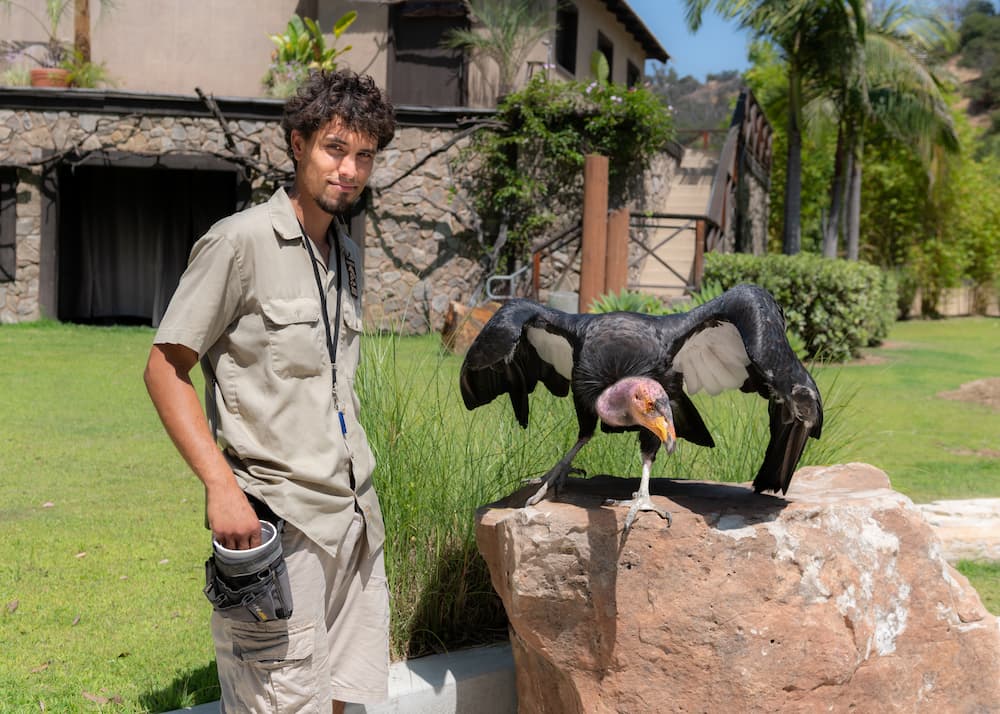Summary of Behind the Scenes with Keepers:
National Zoo Keeper Week is being celebrated in July, and this article highlights the various tasks that zookeepers perform daily. Keepers feed the animals, provide training, assist in medical procedures, conduct research, and monitor behavior and group dynamics. They also clean the animal habitats and may participate in field conservation efforts. Becoming a zookeeper requires dedication; many start as volunteers before being hired. The article provides specific examples of the tasks keepers do, such as weighing meerkats, regulating water conditions for frogs, and providing enrichment for animals. Keepers also monitor the animals’ health, prepare their diets, establish routines, and build trust with the animals. The article also mentions the impact of the pandemic on the birds of the Bird Show, who needed to be reacclimated to crowds before performances could resume.
Behind the Scenes with Keepers: A Glimpse into the World of Zoo Care
– Zoo keepers play a vital role in animals’ day-to-day lives in zoos.
– Keeper responsibilities include feeding, training, medical assistance, research, enrichment, and cleaning.
– Becoming a keeper requires dedication and often starts with volunteering.
– Keepers monitor animal health, provide care routines, and develop trust with the animals.
– Even during the pandemic, keepers continue to work behind the scenes to ensure the well-being of the animals.
National Zoo Keeper Week is just around the corner, and it’s the perfect time to celebrate the unsung heroes of our zoos – the keepers! Beyond their cool outfits and wealth of knowledge, keepers are responsible for numerous tasks impacting the lives of the animals under their care. Keepers do everything from feeding to training, monitoring health, and providing enrichment. So let’s take a behind-the-scenes look at what they do and what makes them the best caretakers of our animal friends.
Feeding and Nutrition:
One of the primary roles of a zoo keeper is ensuring that the animals are well-fed. This involves gathering leaves known as “browse” from surrounding areas, providing the animals with a diverse and natural diet. Keepers work closely with animal nutritionists to ensure that the diets are well-balanced and meet each animal’s specific needs. They also pay close attention to an animal’s eating habits, being the first to notice any changes in appetite or activity levels.
Training and Enrichment:
Training animals is essential to their care, and keepers play a crucial role in this process. By teaching animals to respond to commands, go where directed, and stay calm during medical procedures, keepers can ensure their well-being and make their care more manageable. In addition to training, keepers also provide enrichment for the animals. This involves introducing new activities, smells, objects, and challenges into their habitats to keep them mentally stimulated, physically active, and entertained.
Health Monitoring and Care:
As keepers interact with the animals daily, they become the first line of defense for spotting any health concerns. They continuously monitor the animals for signs of general health and report any potential issues to the zoo’s veterinarians. This close relationship between keepers and animals helps ensure that the animals receive prompt and appropriate medical care when needed.
Routines and Trust:
Animals thrive on routine, and keepers work diligently to establish and maintain consistent care routines. Creating a predictable environment lets animals know what to expect and respond comfortably. Keepers use tools such as sound makers to signal when it’s time for care, creating trust and a sense of security between the animals and their keepers.
Cleaning and Habitat Maintenance:
With the care of numerous animals comes the responsibility of keeping their habitats clean and well-maintained. Keepers are no strangers to cleaning, from scooping poop to ensuring habitats are neat and safe. By maintaining a clean and hygienic environment, keepers ensure that the animals can live safely and healthily.
Building Trust and Unpredictable Moments:
Trust between keepers and animals is crucial, especially during out-of-the-ordinary moments. Whether for medical exams or behavioral training, keepers build trust with the animals to ensure their cooperation and well-being. This trust is invaluable in maintaining the animals’ overall health and enabling necessary procedures to be carried out smoothly.
Adapting During the Pandemic:
Even during challenging times like the pandemic, keepers continue to work behind the scenes to provide the utmost care for the animals. From adjusting training routines to accommodate the absence of audiences to reacclimating animals to crowds, keepers go above and beyond to ensure the animals’ well-being and maintain their natural behaviors.
Conclusion:
Zoo keepers are the unsung heroes who dedicate their lives to the care and well-being of our animal friends. Their responsibilities go far beyond what meets the eye, from feeding and training to health monitoring and habitat maintenance. The bond of trust and their daily routines with the animals ensure a safe and enriching environment for the animals in their care. So, next time you visit a zoo, take a moment to appreciate the hard work and dedication of the keepers who make it all possible. National Zoo Keeper Week is the perfect time to celebrate these frontline stars!

